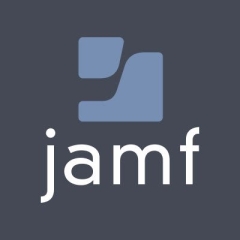What is our primary use case?
As an organization, we are resellers, we provide services to our clients, and we work on various government and manufacturing projects.
We provide consultancy, as well as our services for both Jamf Pro and Apple products.
We also offer assistance if they encounter any problems with the integration of Apple products.
What is most valuable?
When I first started using this product, there were a couple of features that still excite me because there was no scope to address those issues. And these features completely eliminate some of our previous issues.
I am most excited about a feature that is called User-Initialed Enrollment.
I also like the Composer feature, which is a unique feature.
Snapshot is one of the tools that allows any package, container, or package creator to find a way to work with various applications.
I really liked the Self Service applications as well. It is very convenient and useful.
What needs improvement?
The response time for support could be significantly improved.
I have some customers who are struggling to get a response.
The amount of time required for remediation is also a challenge. If the problem is identified on the first call, it should be tagged and resolved within the tag. This is something we have been dealing with, as well as a problem that some of our clients have encountered.
The cost could be lower.
For how long have I used the solution?
I've been working with Jamf Pro for five years. I received my Jamf certification in 2017 and have been using it ever since.
What do I think about the stability of the solution?
Jamf Pro has been stable.
What do I think about the scalability of the solution?
Jamf Pro is a product that can be scaled. Scalability is something that must and should exist, and I always believe in possibilities.
At the moment, the way the product is designed for managing Apple devices meets my needs.
When I need to scale it in the future, I know it's a possibility.
How are customer service and support?
Support is something I believe could have been improved.
They offer one of the best cloud services available.
However, the response time and remediation could have been significantly improved.
Which solution did I use previously and why did I switch?
Prior to Jamf Pro, I worked with three different products: SOTI, MaaS360, and VMware Workspace ONE.
How was the initial setup?
The initial setup is quite simple. It is not at all complicated.
It is extremely simple for any user from an endpoint and an administrator's perspective.
What's my experience with pricing, setup cost, and licensing?
It would be beneficial if it could be reduced slightly.
The price for these products is designed in such a way that I believe it is a little on the high side.
What other advice do I have?
They are really evolving, and there have been a lot of improvements since 2017. I like the changes that have been made.
It is now designed in such a way that it can serve the needs of any organization. I have not encountered any issues where I felt it could have been significantly improved, and a specific feature could have greatly aided in addressing issues. So far, everything is running smoothly.
It is recommended for any of our organizations. Jamf Pro is superior to MDM on an Apple platform. If you put Jamf into context and you only want to manage Apple, I believe this is one of the best options.
It can be argued that the fact that it only supports Apple is either an advantage or a disadvantage.
Jamf is your go-to solution for managing your Apple Suite. You should investigate and deploy this product.
I would rate Jamf Pro a nine out of ten.
Which deployment model are you using for this solution?
Public Cloud
Disclosure: My company has a business relationship with this vendor other than being a customer:










